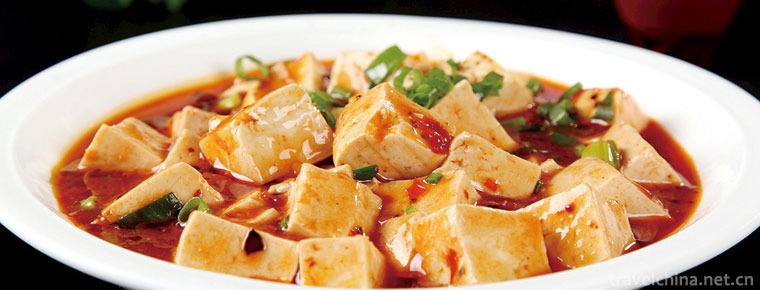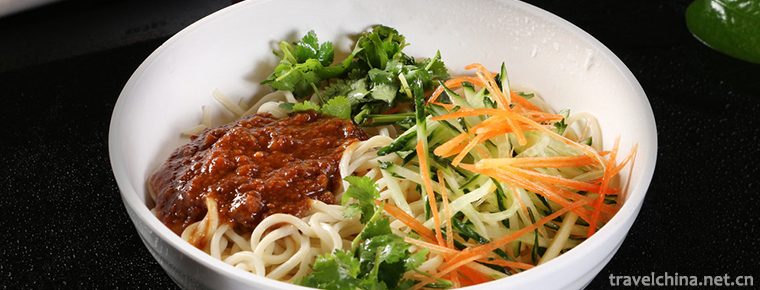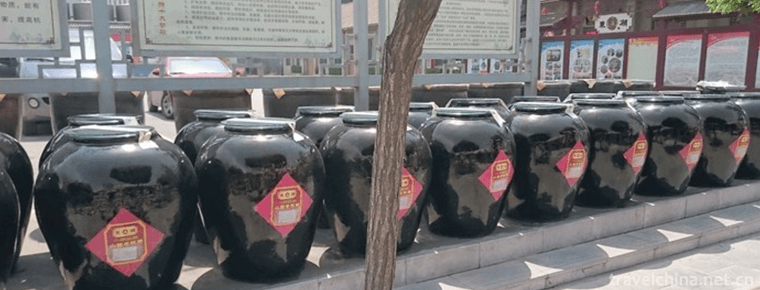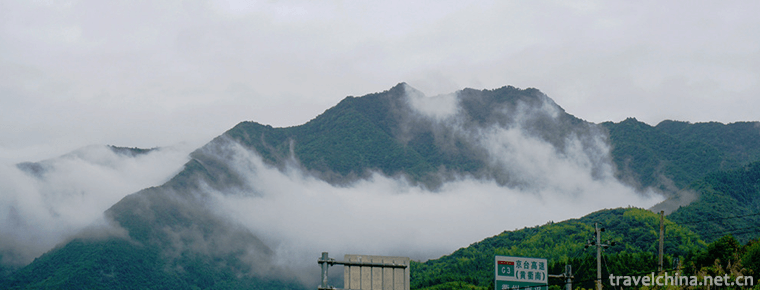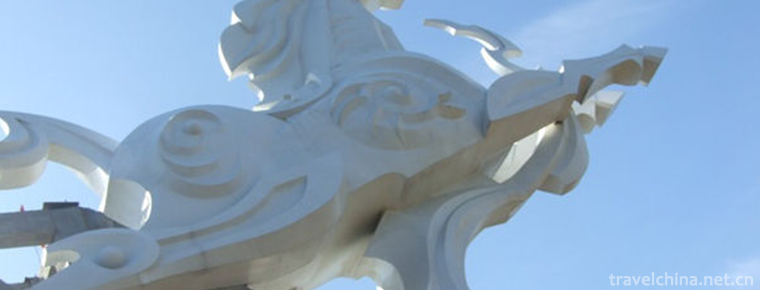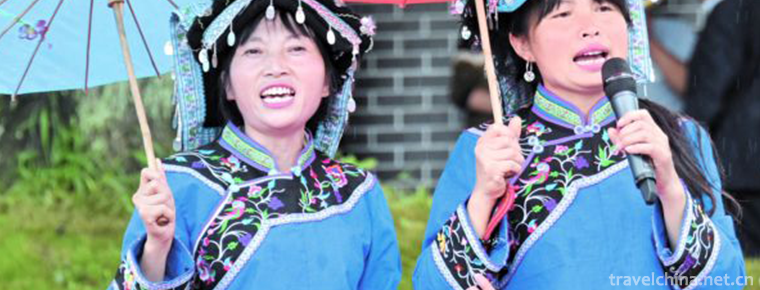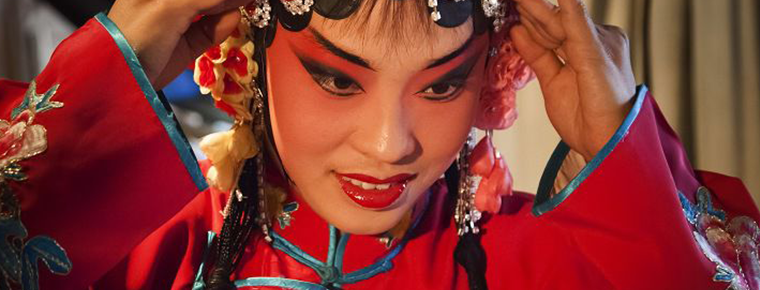Mount Heng
Mt. Hengshan, also known as "Tai Mt. Hengshan", is known as "Xuanwu mountain" and "Yushan". Among them, inverted Ma Pass, Bauhinia Pass, Pingxiaoguan Pass, Yanmen Pass, Ningwu Pass and Tiger Crossing are dangerous, which is the throat of the plateau leading to the central Hebei Plain. The main peak Tianfeng Ling is located in the south of Hunyuan County, 2016.1 meters above sea level.
Mt. Hengshan is located 10 kilometers south of Hunyuan County, Datong, Shanxi Province, 62 kilometers away from Datong city. Mount Heng in Beiyue, together with Mount Tai in Dongyue, Mount Huashan in Xiyue, Mount Heng in Nanyue and Mount Song in Zhongyue, is the geographical symbol of China and the holy land of Quanzhen School, the mainstream of Taoism in the world.
In 1982, Hengshan, in the name of Hengshan Scenic Area in Shanxi Province, was approved by the State Council to be listed in the first batch of national AAAA-level scenic spots.
Hengshan is located in Hunyuan County, Shanxi Province, Hengshan scenic area of 147.51 square kilometers, 359.62 square kilometers of peripheral protected areas, geographic coordinates 39 23 to 39 44, east longitude 113 36 to 113 57 between.
Hunyuan county is located in the temperate semi-arid continental climate of Hunyuan, with four distinct seasons. Winter is cold, spring is dry and windy, summer rainfall is concentrated, autumn is short and sunny. Temperature difference between morning and evening. The average annual temperature is 6.1 C, the coldest in January, the average is - 12.7 C, the hottest in July, the average temperature is 21.6 C, the average temperature from April to October is more than 7 C, is the suitable season for sightseeing and vacation, the tour time can reach 210 days.
Hengshan Reservoir is located 5 km south of Hunyuan County, Shanxi Province, at the foot of Hengshan Mountain in North Yue, on Tangyu River, a tributary of Hunhe River in the upper reaches of Sanggan River, Yongding River system in Haihe River Basin. The total reservoir capacity is 13.3 million cubic meters. It is a medium-sized water conservancy project with flood control as the main factor and irrigation as the consideration. The dam started in 1958 and has been completed in four years. It was completed in 1962. The dam crosses Tianfeng and Cuiping Er Shan, and divides the canyon's water into the dam. Mt. Hengshan reservoir has been running for 51 years since the beginning of water storage in 1966. 2017.
Hanging Temple is located in the reservoir area of Mt. Hengshan, which is only 150 meters away from the dam. The temple was first built in the fifteenth year of Taihe in the Northern Wei Dynasty (491 AD). At the beginning of its construction, the temple was 80 meters away from the bottom of the valley. Later, it was only 58 meters away from the bottom of the valley because of the deposition of the river bed over the years. In the past two years, the Hengshan Scenic Spot Management Department, in conjunction with the World Heritage Declaration, has made great efforts to comprehensively control the environment of the suspended temple, remove the engineering waste residue left over from the construction of Hengshan Reservoir and Hengshan Tunnel, and remove 200,000 cubic meters of silt from the river bed over the years.
Hengshan is a fault mountain formed by orogeny and crustal uplift. The rock stratum is the ancient Cambrian Ordovician limestone, which has been 500 million years. The bedrock area is exposed, the weathering and fragmentation are serious, the peaks and ridges are pointed, the gullies and valleys are cut deeply, and the relative height difference is more than 1000 meters. The whole mountain range stretches hundreds of kilometers from northeast to southwest. It is known as the first mountain in cold Xinjiang, which stands on the square surface of China and is guarded by Gong Shenjing. The Hengshan Mountains began in the Taihang Mountains, spanning the Sierra Leone, Yanshan in the east, Yanmen in the west, Sanjin in the south, Yun Dynasty in the north, and 500 miles in the East and West (spanning Ningwu, Shuozhou, Daixian, Yingxian, Fanshi, Shanyin, Hunyuan, Lingqiu, etc.). It is the watershed between the Sanggan River and the Hutuo River, a tributary of the Haihe River.
Mt. Hengshan, the five mountains of China. Its mountain ranges originated in Yinshan, originated in Guanchenshan, ended in Mount Taihang, winding along the northeast, ups and downs, across the plug, East and West stretching 500 miles, beautiful 108 peaks. Tianfeng Mountain, the main peak of Hengshan Mountain, is located in Hunyuan County, with an elevation of 2016.1 M. It is known as "the North pillar of man's heaven" and "the famous mountain of extinction". It is a magnificent mountain and is known as the patriarch of Wanshan Mountain in the north.
The Mt. Hengshan scenic spot is one of the first batch of 44 national key scenic spots in the State Council released in 1982. According to the 1984 plan, the panorama has 4 levels of protected areas and 1 nature reserves. The area of the second-level reserve is 62.10 square kilometers, with the Tianfeng Mountains and Cuiping Mountains facing two peaks as the center, including Tianfeng Mountains, Cuiping Mountains, Qianfoling, Hot Springs and Hunyuan City Scenic Spots; Longshan is a nature reserve.
Hengshan main peak is divided into East and West peaks, east of Dafeng Lingxi for Cuiping peak, two peaks confrontation, unique style, cliff green belt, clear hierarchy. Jinlong Gorge, located between the Tianfeng Mountains and Cuiping Mountains, the canyon is deep and deep, the cliffs stand side by side, the stone clips the sky, the narrowest point is only three Zhangs. This place has long been a battleground for the military. In the Northern Wei Dynasty, Dao Wu Di sent tens of thousands of soldiers, and took the chisel road as a gateway to the Central Plains. In the Song Dynasty, Yang Ye and his son took advantage of danger to resist foreign invasion. The landscape of Hengshan is full of magic colors, accompanied by Beautiful myths and legends. Hanging root pine, purple Chi Valley and bitter sweet well are also the wonders of the natural landscape. The bitter sweet well is located in the Mt. Hengshan half waist, Shuangjing side by side, separated by 1 meters, the water quality is very different. A well of water, such as dew, sweet and cool, several feet deep, inexhaustible, for people to drink, Tang Xuanzong Li Longji plaque "Longquan view". Another well water is bitter and hard to drink. Now the bitter well has been sealed. Mt. Hengshan pine is a sight for Mt. Hengshan. "Four big Fu Song", the ancient pine roots hang outside the stone, cling to the rock, stand upright and pose strong. In the Hufeng Gate view pine, or stand on the cliff, or hang upside down on the cliff, such as umbrellas such as wings such as pavilions such as dragons such as bridges, various postures, graceful manner. Mt. Hengshan clouds are changeable. Cloud cave in the hillside not far from the Houttu Madame Temple, sunny Langlang, the mouth of the cave quiet, rain, the mouth will swim out of the wisps of white clouds, fascinating.
In 1982, the Mt. Hengshan scenic spot was promulgated by the State Council as the first "national scenic spot".
In 1995, the Mt. Hengshan scenic spot was rated as "the top ten tourist attractions in Shanxi".
In 1999, the Mt. Hengshan scenic spot was awarded the honorary title of "the five famous tourist attractions in Shanxi".
In 2002, the Mt. Hengshan scenic spot was awarded the "national AAAA grade scenic spot".
(1) protection objectives
Hengshan Scenic Spot Management System, effectively strengthen the overall planning, coordination and management of Hengshan Scenic Spot service functions, to perform a good scenic area of public welfare, affairs and other management functions. The establishment of Mt. Hengshan culture tourism company, as the main body of the scenic spot, makes the tourism industry bigger and stronger.
(two) management structure
1, management system
In accordance with the spirit of the reform of the tourism system in the provinces and municipalities, a new administrative committee for scenic spots has been set up, which is still the dispatched agency of the Datong People's Government, and continues to entrust Hunyuan County with the management of planning, development, protection and utilization of Hengshan scenic spots. In accordance with the requirements of unified leadership, unified planning, unified policies and unified authorization, a new mechanism and management model for the integration of functions of scenic spots, forestry and cultural relics has been established. The responsibilities of the CMC and the establishment of internal organs shall be issued separately by the municipal editorial board.
2. Scope of administration
From 22.73 km2 in 2017 to 122.38 km2, the core scenic area is 42.16 km2, including Tianfeng Mountain, Cuiping Mountain, Tianzhigougou, Qianfoling, Wangzhuangbao, Lingyunkou and Shenxi.
(three) business framework
Set up Datong Wen Brigade Group Mt. Hengshan culture tourism company, registered in Hunyuan county. Realize the separation of the two powers of management and operation rights and market operation.
1. Ways of organization
The state-owned assets formed by various investments in Hengshan Scenic Area, other than investment in cultural relics, protection and restoration funds, include the state-owned assets formed by various types of government appropriations and loans from the central, provincial, municipal and county governments, which are transferred to Hengshan Cultural Tourism Company after being identified by the auditing institutions, and are regarded as the state-owned assets of the company.
2, management and preservation funds
According to the Law of the People's Republic of China on the Protection of Cultural Relics, the Regulations on the Protection of Hengshan Scenic Spots and the Provincial Party Committee and the Provincial Government's Jinfa [2016] 34, the management right in the scenic spots shall be authorized by the Municipal Government to sign a trusteeship agreement between the Hengshan Administrative Committee and the Cultural Brigade Group Limited Company for the management of the enterprises. After the right, Wenlu Group Co., Ltd. specializes in operation and management, adopts a variety of marketing methods, expands operating income, and gradually forms an industrial chain that does not rely solely on "ticket economy" to achieve balanced development of other tourism elements. Ticket income of cultural relics and scenic spots shall be turned over to Hunyuan County for the protection of cultural relics and scenic spots, and for the development of tourism industry in scenic spots and the increase of capital of the company. Specifically, the municipal and county financial departments should establish incentive mechanisms and management methods in light of the practice of other provinces and municipalities in China.
3, personnel placement principles refer to Yungang scenic spot.
natural resources
Animal resources
Hengshan National Forest Park , there are about 60 kinds of wildlife, of which one kind of protective animals is the leopard and the black stork; the second kind is the Golden Eagle and the musk deer; the third kind is the vulture, the falcon, the stone marten and the leopard cat.
plant resources
There are 43families, 233 genera and 407 species of vascular plants in Hengshan National Forest Park , among which there are many valuable Chinese medicinal herbs.
Forest resources
Hengshan National Forest Park covers a total area of 28,274.3 hectares (424,100 mu), of which 11,243.3 hectares (16.86 million mu) are for forestry and 17,731 hectares (255,400 mu) are for non-forestry. The woodland coverage rate is 26%, and the total forest volume is 300 thousand cubic meters.




















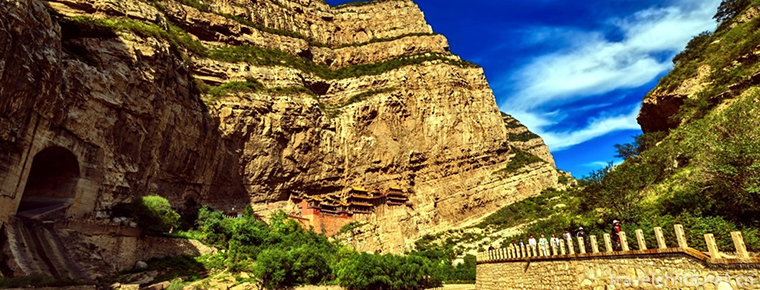
-
sauteed tofu in hot and spicy sauce
sauteed tofu in hot and spicy sauce is one of the traditional dishes in Sichuan.
Views: 207 Time 2018-10-12 -
Noodles with Soy Bean PasteBeijing Style
Old Beijing fried noodles, a traditional Chinese pasta, made from dishes, fried sauce mixed noodles, popular in Beijing, Hebei, Tianjin and other places..
Views: 230 Time 2018-10-27 -
Vinegar garden in East Lake
Donghu Vinegar Garden is located at No. 26 Madaobo between Dongshan Expressway and Jianbei Road in Taiyuan City. It covers an area of more than 20,000 square meters. Shanxi is most famous.
Views: 132 Time 2018-12-20 -
Jianglangshan 28du Tourist Area
28du Town, located in Jiangshan, Zhejiang Province, is a famous historical and cultural town. It is a writer's creation base in Zhejiang Province. It is located at the junction of Zhejiang,.
Views: 192 Time 2019-01-21 -
Legend of White Horse Dragging
The legend of white horse dragging rein is spread in Baima Temple in Jincheng, Shanxi Province. Baima Temple Mountain was originally named Sima Mountain.
Views: 189 Time 2019-04-03 -
Buyi Chabai Song Festival
The Buyi Chabaige Festival is a commemorative festival of the Buyi people in Xingyi, southwest Guizhou Province. It is held in Chabaichang, Dingxiao Town, Xingyi City.
Views: 152 Time 2019-04-04 -
Guilin fishing drum
Guilin fishing drum, commonly known as sentiment, is the local traditional rap and singing art of Guilin. The Song Dynasty was introduced into Guilin from the north, .
Views: 145 Time 2019-05-02 -
Jin Opera
Jin Opera is Shanxi Bangzi, an important drama in northern China, also known as Zhonglu Opera, Chinese traditional opera. It was named after Fenyang, Xiaoyi, Qixian, Taigu and Taiyuan, which sprang up.
Views: 176 Time 2019-05-07 -
Xinhui Sunflower Art
Xinhui Sunflower Art, a traditional Chinese handicraft, originated in Xinhui District, Jiangmen City, Guangdong Province. Xinhui Sunflower Art has a history of more than 1600 years, and became famous .
Views: 125 Time 2019-07-06 -
Yi Peoples Cigarette Box Dance
Yi cigarette box dance, the traditional dance of Hani Yi Autonomous Prefecture in Honghe, Yunnan Province, is one of the national intangible cultural heritage..
Views: 161 Time 2019-07-12 -
Baoguang Temple
Baoguang temple is located in Xindu District, Chengdu City, Sichuan Province, China. It is one of the Buddhist temples with a long history, large scale, complete structure and quiet environment..
Views: 115 Time 2020-11-05 -
Social undertakings in Guangyuan
By the end of 2017, there were 751 schools at all levels and types in Guangyuan City (excluding primary and primary school teaching sites), with 380700 students and 26800 full-time teachers. Among them, there are 3 universities with 21500 students and.
Views: 312 Time 2020-12-15
